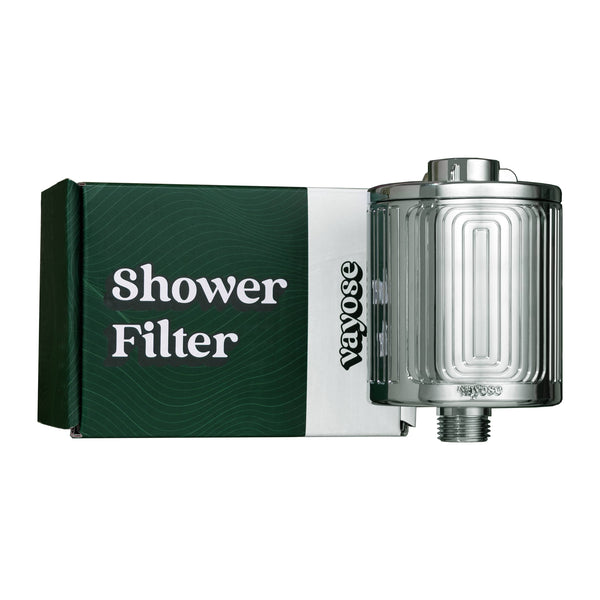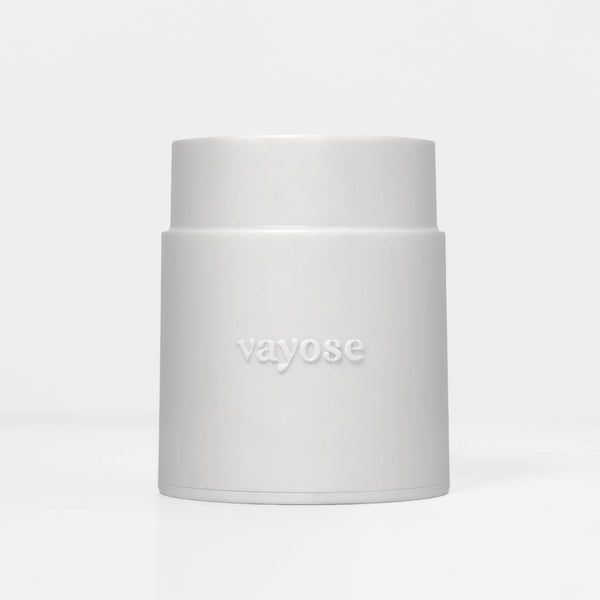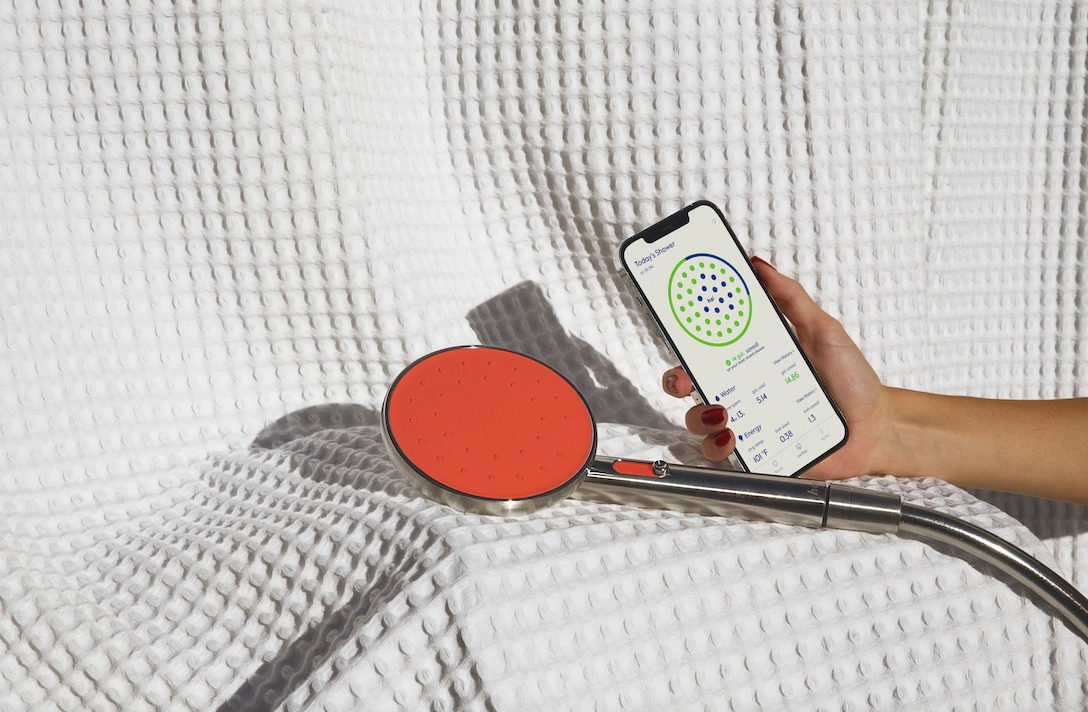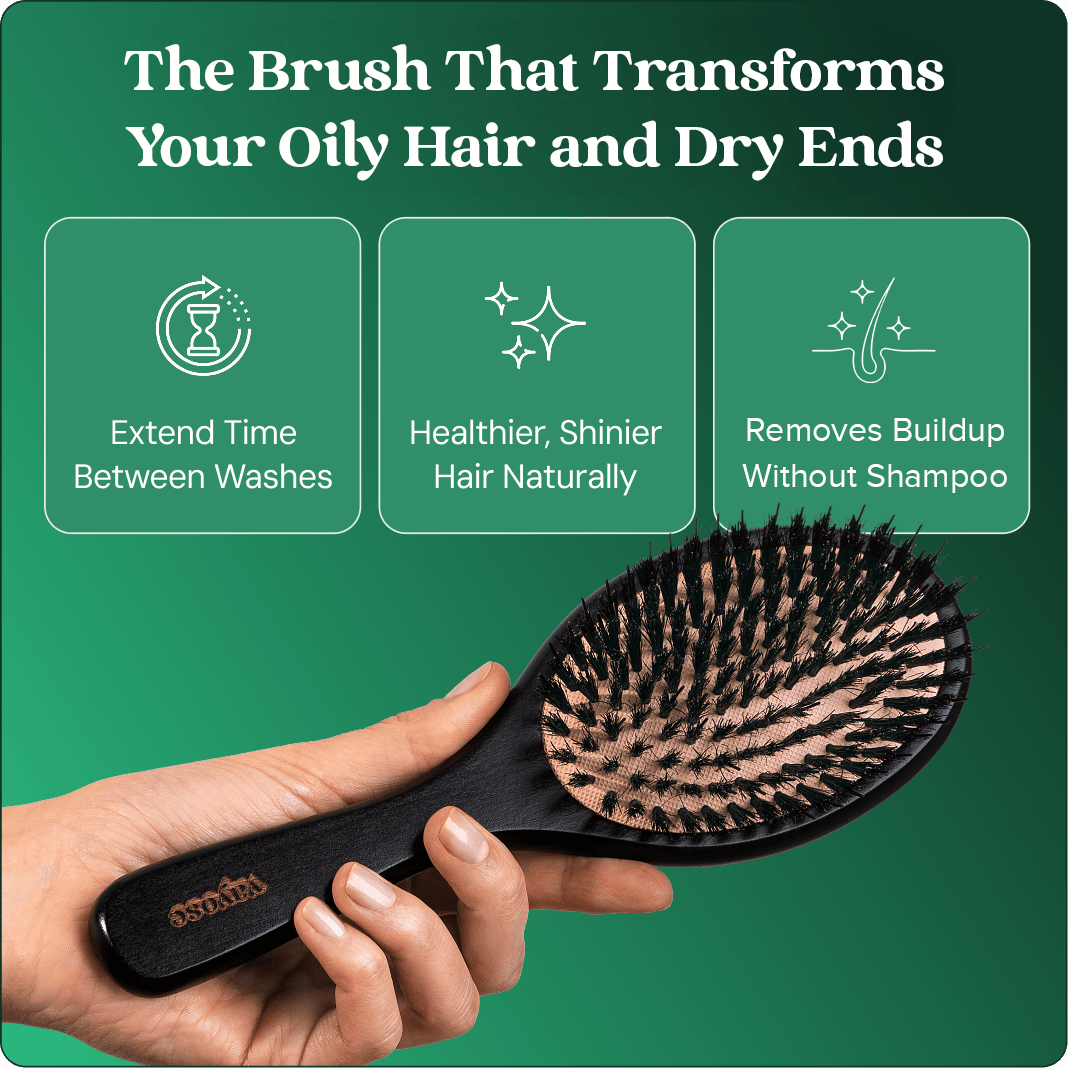Vayose offers three complementary solutions that address both these often-neglected elements:
No Shampoo Hair Brush – for scalp stimulation, oil distribution, and reducing the frequency of shampooing
Shower Filter – to purify the water coming out of your showerhead, removing chlorine, minerals, and impurities
Shower Filter Replacement – timely upkeep so the filter stays effective
Together, these tools form a holistic system to support scalp, hair, and skin health. Let’s dive into how each is used, what benefits you can expect, and how to weave them into your everyday routine.
1. Beyond Detangling
What It Is & How It Works
The No Shampoo Hair Brush is designed to be more than just a detangling brush—it’s a scalp tool meant to reduce oiliness, loosen buildup, and encourage your scalp to rebalance its natural oils. According to the product page, it uses a combination of tipless nylon bristles and boar bristles to gently lift residues while evenly distributing sebum along the hair shaft.
In effect, this brush aims to reduce the need for daily shampooing (hence “no shampoo”), extend time between washes, and support healthier scalp function. Users report that within two weeks, their scalp feels more balanced and they can go several days between washes.
Uses & Benefits
- Reducing over-washing: Daily shampoos can strip natural oils and lead to scalp imbalance. This brush helps “reset” that balance by physically removing excess oil and buildup.
- Scalp stimulation & circulation: Gentle brushing improves blood flow to hair follicles, which may support healthier hair growth.
- Even oil distribution: Instead of oil pooling at the scalp, the brush helps spread it to mid-lengths and ends, reducing the greasy-root look.
- Build-up removal without water: Useful between wash days, especially for those following “no-poo” or low-poo routines.
How to Use It Effectively
Use on dry hair, starting at the scalp and brushing in downward strokes.
Spend 2 minutes daily (or morning + evening for the first few weeks) to allow the scalp to adjust.
Start gently—press lightly until your scalp becomes accustomed.
Pair with occasional shampooing (if needed) to clarify and reset.
Caution & Real-World Feedback
While many users praise the brush, some report discomfort, itchiness, or increased oiliness when starting out. For example, a Reddit user noted the bristles felt sharp on sensitive scalps. Others suggest the brush works better with lighter pressure and gradual adaptation. Always patch test first and listen to your scalp’s response.
2. Clean Water, Cleaner Skin & Hair
Why Do You Need a Shower Filter?
Many of us neglect the quality of water we shower in. Municipal water often contains chlorine for disinfection, plus minerals (calcium, magnesium) in areas with “hard water.” These substances can:
Strip natural oils from your skin and scalp
Leave hair dry, brittle, and dull
Cause scalp irritation, flaking, or sensitivity
Interact with soaps and shampoos, reducing their efficacy
A Shower Filter intercepts these contaminants before they reach your body, giving you gentler water and a healthier shower experience.
Uses & Benefits
- Chlorine reduction: Many filters effectively reduce free chlorine, which otherwise dries skin and hair.
- Mineral / hard water control: Filters help mitigate some negative effects of minerals (though not always fully removing “hardness”).
- Improved skin hydration: With fewer harsh chemicals, skin retains more moisture and is less prone to dryness or redness.
- Better hair texture & color protection: Less mineral residue means smoother strands, less frizz, and better color fidelity for dyed hair.
How to Use It
Install the filter inline with your showerhead—i.e. between your shower arm and showerhead (or in place of a hand-held connection). Many filters are “drop-in” or screw-on designs.
Run water through it for a minute upon first installation to flush initial dust or carbon fines.
Shower as normal—the water you use, bathe, and shampoo with will be cleaner.
Performance & Limitations
A good filter will reduce chlorine and some minerals—but it’s not a magic bullet for all water contaminants (like heavy metals or high hardness loads). Some shower filters also lose efficiency over time or reduce water pressure.
Therefore, timely filter replacement is essential to maintain performance.

3. Maintaining the System
Why You Must Replace the Filter
Over time, the filtration media inside your Shower Filter Replacement becomes saturated—chlorine, minerals, and trapped particles fill up the filter. Once full, it loses efficacy and may even release those contaminants back into your water.
Replacing the filter regularly ensures:
Consistent chlorine and impurity reduction
Proper water pressure
Continued benefit to skin & hair
When & How to Replace
Most filters recommend replacement every 4–6 months, depending on water quality and usage.
Turn off water, unscrew the housing, remove the old cartridge, insert the new one (often with a correctly oriented seal), and reassemble.
After replacement, run water for a short time to flush any dust before use.
Tips to Maximize Filter Life
Avoid very hard water zones, or pre-filter upstream if feasible.
Trim shower durations or reduce flow to reduce workload.
Keep spare cartridges on hand to ensure you never go long without replacement.

Combining All Three: A Unified Routine for Healthy Hair & Skin
When you use the No Shampoo Hair Brush and filtered shower water, you address both mechanical scalp care and the quality of water your scalp and hair are exposed to. The filter ensures that water is gentler and doesn’t undo your efforts, while the brush helps maintain scalp balance and reduce reliance on harsh shampoos.
Here’s how to put them together:
Morning / Day Use
- Jump into a filtered shower.
- Use gentle or minimal cleansing (if necessary).
- Let filtered water treat your hair & skin.
Between Washes / Off Days
- Use the No Shampoo Hair Brush on dry hair to refresh your scalp.
- Avoid washing unless needed.
Maintenance
- Replace shower filter cartridge on schedule.
- Clean the hair brush by removing trapped hair and rinsing lightly.
- Monitor how your scalp feels (adjust usage intensity).
Through consistent use, many users report longer spans between shampooing, more balanced scalps, less frizz, and healthier skin.
Potential Caveats & Best Practices
- Be gradual: Transitioning to reduced washing or filtering water takes time—your scalp needs to adapt.
- Use complementary products: A mild shampoo or clarifying wash once every 1–2 weeks can help reset buildup as needed.
- Patch test sensitivities: Some may find the brush or filtered water feels strange at first—start slowly.
- Quality matters: Cheap filters or brushes with poorly finished bristles can cause more harm than good.
Often, we focus only on the products we put on our hair and skin—serums, shampoos, masks—while ignoring two powerful levers under our control: the mechanical act of brushing and the quality of the water we bathe with.
Vayose’s No Shampoo Hair Brush, Shower Filter, and Shower Filter Replacement form a synergistic system. The brush helps manage scalp oils and buildup sustainably, while the filter ensures the water you use doesn’t work against your efforts. Replace the filter regularly, use the brush consistently, and over time you may find yourself washing less often—with healthier hair and skin to show for it.

